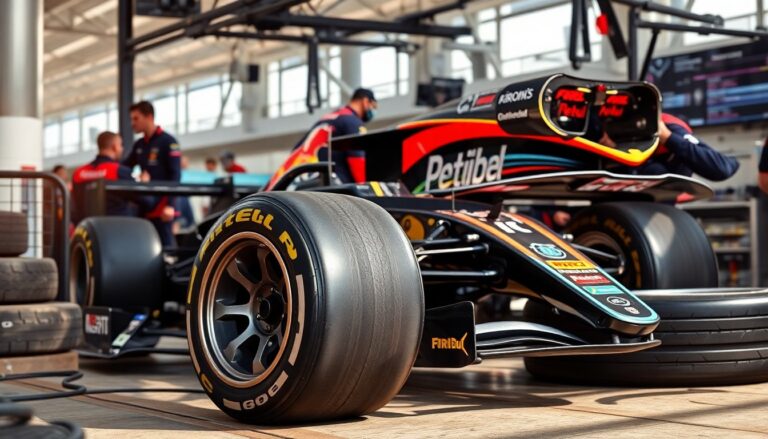Argomenti trattati
Formula 1, or F1, is widely regarded as the pinnacle of motorsport, showcasing speed, engineering, and driver skill. Since its inception in 1950, the sport has transformed significantly, adapting to technological advancements and evolving public perceptions. Today, F1 serves not only as a display of automotive excellence but also as a platform for innovation in sustainability and energy efficiency.
This article examines the evolution of Formula 1, emphasizing the technological advancements that have shaped the sport and its recent commitment to sustainability.
The technological evolution of Formula 1
Here are the facts: Formula 1’s appeal lies in its relentless pursuit of speed and performance. Over the decades, the sport has witnessed groundbreaking technological innovations that have pushed the boundaries of what is achievable on the racetrack. The introduction of turbos in the 1970s revolutionized engine performance, enabling cars to achieve unprecedented speeds. These engines, capable of producing more power from smaller displacements, became game-changers.
Moving into the 1990s, the advent of computer technology began to influence race strategies and car designs. Teams started utilizing data analytics to analyze performance metrics, resulting in improved aerodynamics and tire management. The integration of telemetry systems allowed engineers to monitor car performance in real-time, enabling adjustments during races to optimize speed and efficiency.
Hybrid technology and performance
The most significant leap in F1 technology occurred with the introduction of hybrid power units in 2014. These units combine traditional internal combustion engines with energy recovery systems (ERS), which harness energy generated during braking and convert it into additional power. This innovation not only enhanced performance but also marked a substantial shift towards more sustainable practices within the sport.
Hybrid power units have allowed teams to maintain competitive speeds while reducing fuel consumption. The power unit consists of a turbocharged engine paired with an electric motor, which can provide up to 163 horsepower in addition to the traditional engine output. This balance of power and efficiency has established a new standard for racing and influenced automotive engineering beyond the racetrack.
Sustainability initiatives in Formula 1
As global awareness of climate change and environmental responsibility increases, Formula 1 is taking proactive steps towards a more sustainable future. The FIA (Fédération Internationale de l’Automobile) has introduced a plan to achieve net-zero carbon emissions by 2030. This ambitious goal is driving teams and stakeholders to explore innovative solutions that minimize their environmental impact.
One notable initiative is the introduction of sustainable fuels. Starting from the 2022 season, F1 committed to using 100% sustainable fuels, derived from renewable resources. These fuels aim to reduce the carbon footprint of racing while maintaining the high-performance standards expected in Formula 1.
The role of fan engagement in sustainability
In addition to technological advancements, F1 is focusing on increasing fan engagement in sustainability efforts. Initiatives like the ‘F1 in Schools’ program aim to educate young fans about the importance of sustainability and the role of technology in motorsport. By fostering a culture of environmental consciousness among fans, Formula 1 hopes to create a more informed and engaged audience.
Furthermore, partnerships with technology companies are assisting teams in developing innovative solutions to reduce waste and improve recycling at races. These efforts not only enhance the sustainability of the sport but also resonate with a growing audience that values eco-friendly practices.
The future of Formula 1
This article examines the evolution of Formula 1, emphasizing the technological advancements that have shaped the sport and its recent commitment to sustainability.0
This article examines the evolution of Formula 1, emphasizing the technological advancements that have shaped the sport and its recent commitment to sustainability.1

